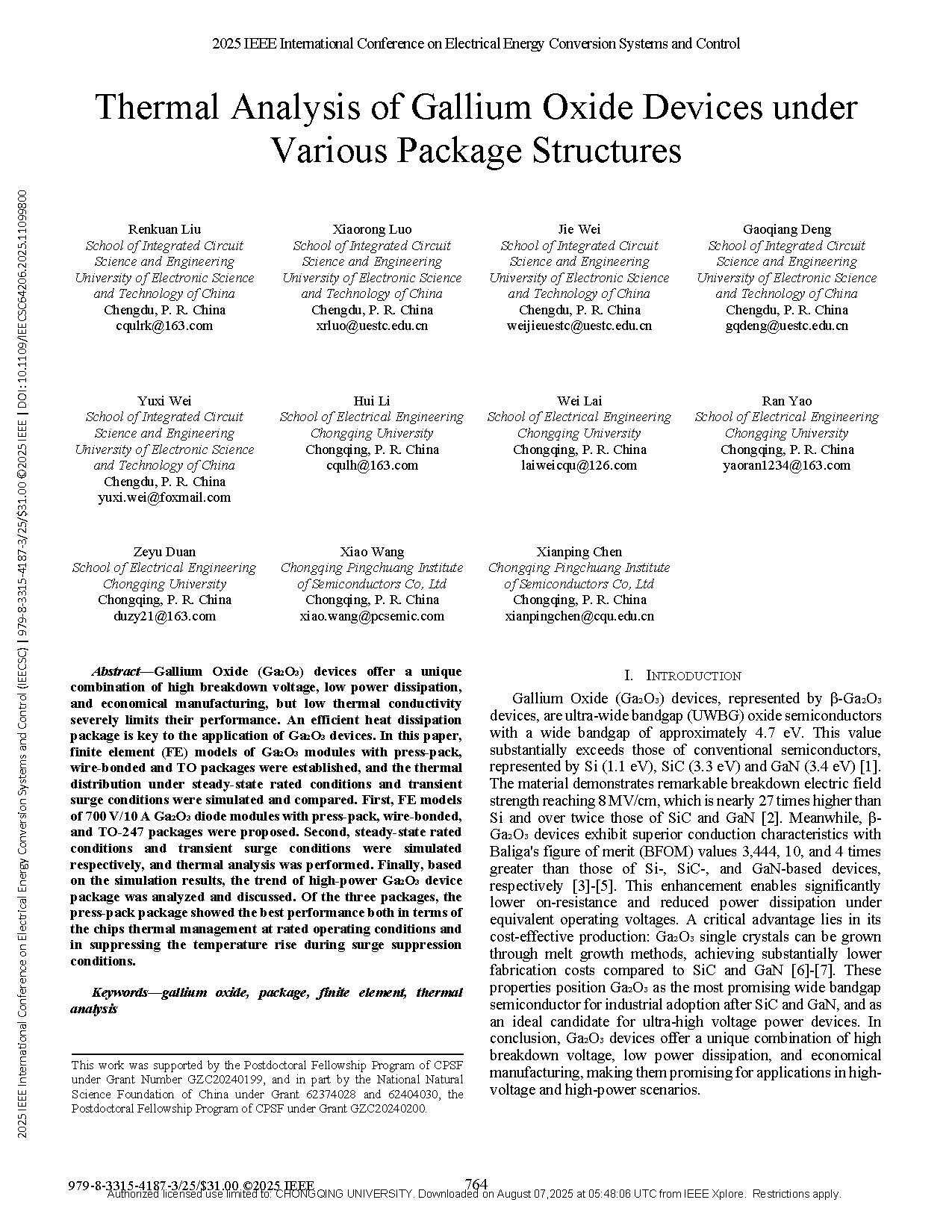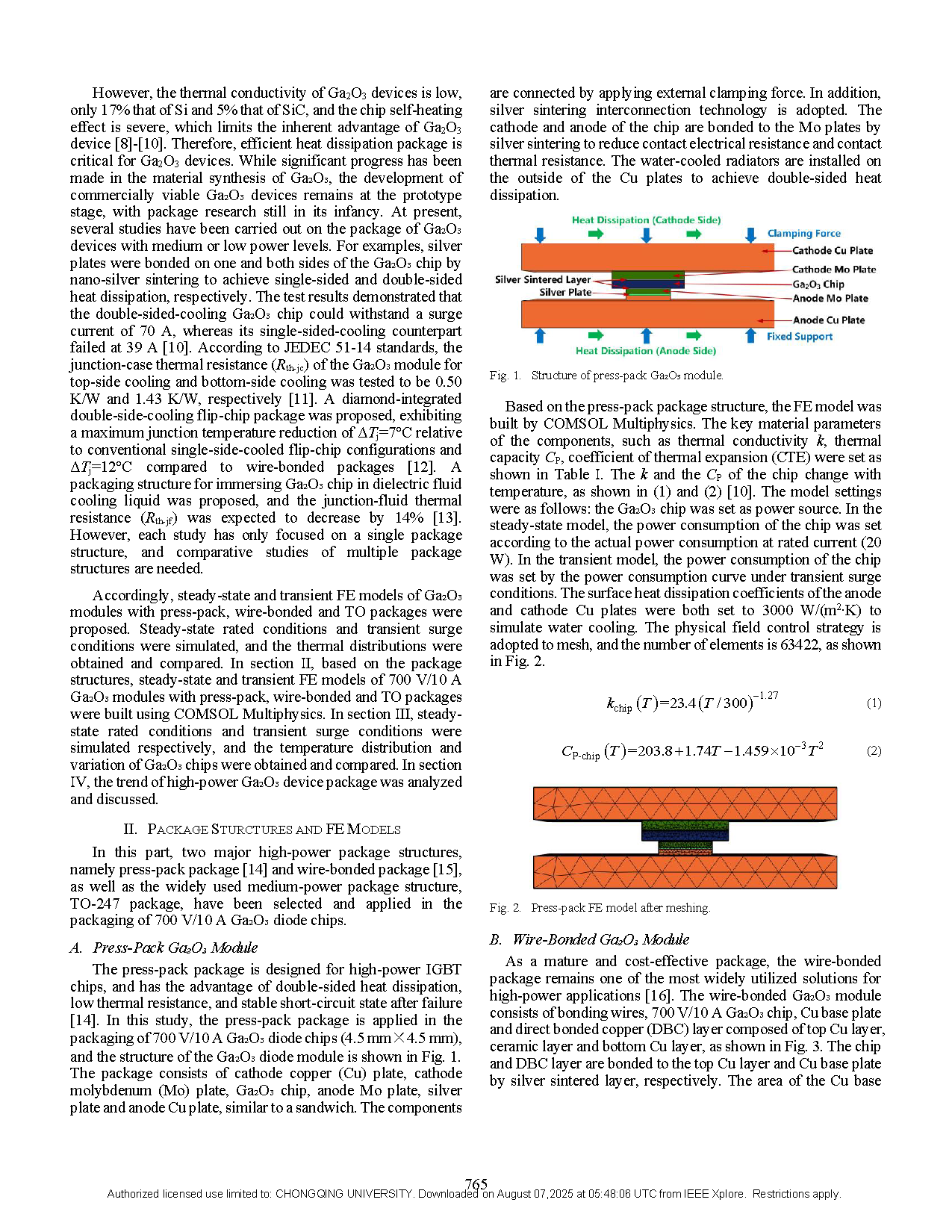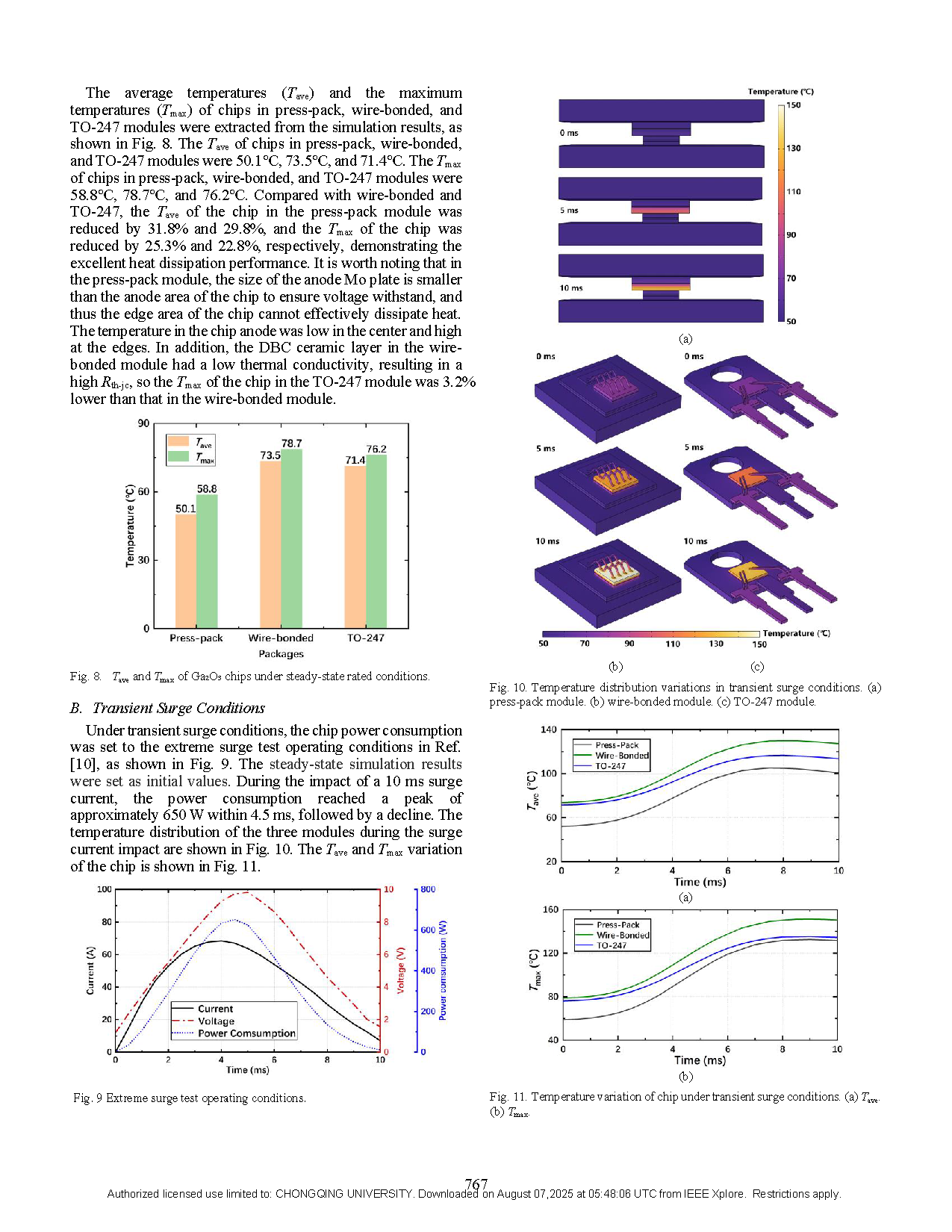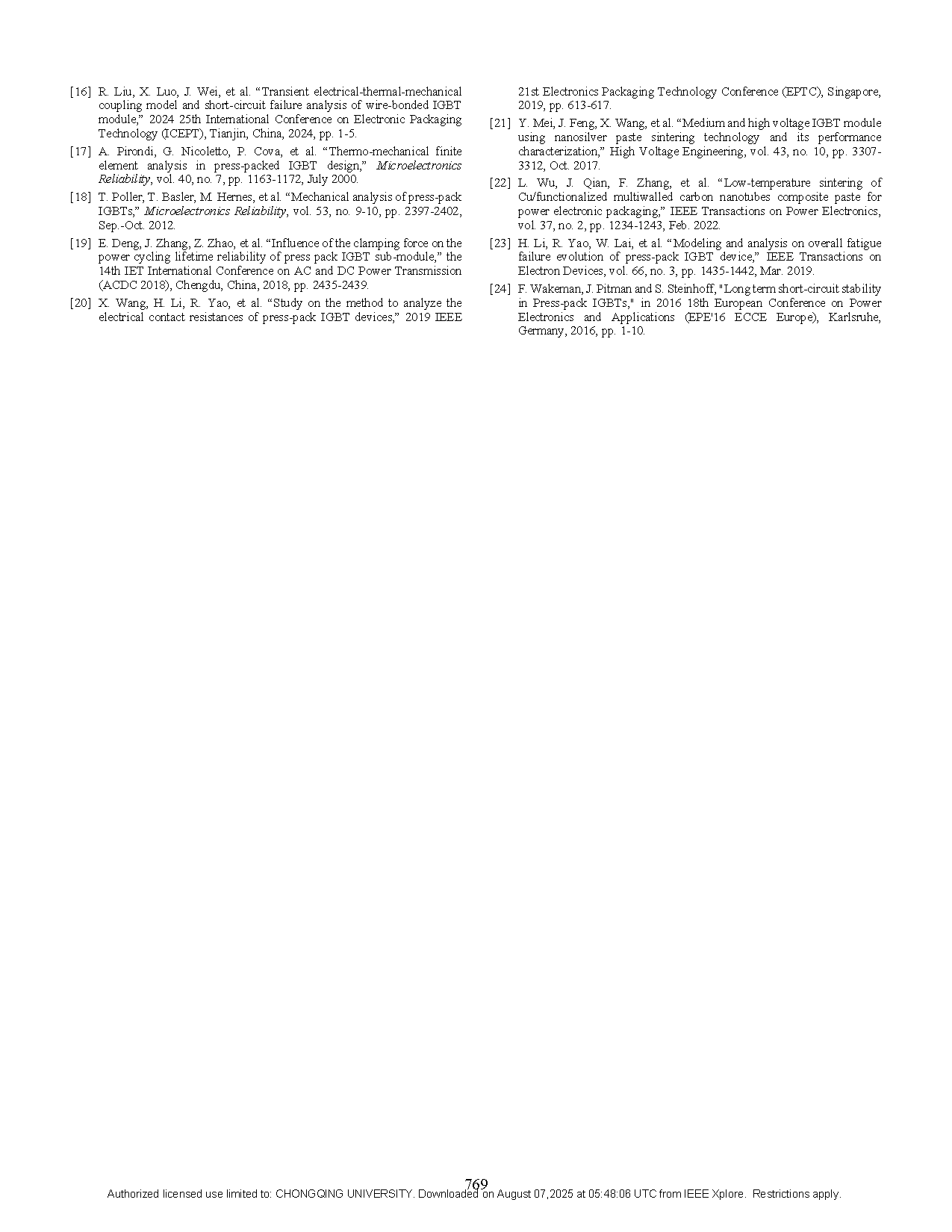
【Member Papers】Thermal Analysis of Gallium Oxide Devices Under Various Package Structures
日期:2025-08-19阅读:106
Researchers from the University of Electronic Science and Technology of China have published a dissertation titled "Thermal Analysis of Gallium Oxide Devices Under Various Package Structures" in 2025 IEEE International Conference on Electrical Energy Conversion Systems and Control(IEECSC).
Background
Gallium oxide (Ga2O3) is an ideal material for next-generation high-power devices. However, the most critical bottleneck lies in its extremely low thermal conductivity. This low thermal conductivity leads to severe self-heating effects when the device operates with high power, causing the junction temperature to rise sharply. Consequently, this limits the performance, reduces the reliability, and may even trigger thermal failure. Implementing efficient thermal management at the packaging level is a key enabler for the practical application of Ga2O3 devices in high-voltage, high-power applications. Thus, the heat dissipation performance comparison of Ga2O3 devices under different packaging structures can provide critical references for optimizing the packaging design of high-voltage, high-power Ga2O3 devices.
Abstract
Gallium oxide (Ga2O3) devices possess unique advantages in high breakdown voltage, low power dissipation, and economical manufacturing. However, the low thermal conductivity severely restricts their performance. Efficient thermal management packaging is critical for the application of gallium oxide devices. In this paper, finite element (FE) models of Ga2O3 modules with press-pack, wire-bonded and TO packages were established, and the thermal distribution under steady-state rated conditions and transient surge conditions were simulated and compared. First, FE models of 700 V/10 A Ga2O3 diode modules with press-pack, solder bonding, and TO-247 packaging are proposed. Second, simulations are conducted under steady-state rated conditions and transient surge conditions, respectively, and the thermal analysis was performed. Finally, based on the simulation results, the development trends of high-power Ga2O3 device packaging are analyzed and discussed. Among the three packages, the press-pack package showed the best performance both in terms of the chips thermal management at rated operating conditions and in suppressing the temperature rise during surge suppression conditions.
Conclusion
In this study, FE models of Ga2O3 modules with press-pack, wire-bonded and TO-247 packages were proposed. The steady-state rated conditions and the transient surge conditions were simulated, and the temperature distributions were obtained and compared. The main conclusions of this study are as follows:
1) Under steady-state rated operating conditions, compared with wire-bonded and TO-247, the Tave of the chip in the press-pack module was reduced by 31.8% and 29.8%, and the Tmax was reduced by 25.3% and 22.8% respectively, demonstrating the excellent heat dissipation performance.
2) Under 10 ms transient surge conditions, compared with wire-bonded and TO-247, the maximum Tave of the chip in the press-pack module was reduced by 18.9% and 9.7%, while the maximum Tmax was only reduced by 12.4% and 2.1%. This performance was attributed to the poor heat dissipation at the edge area of the chip.
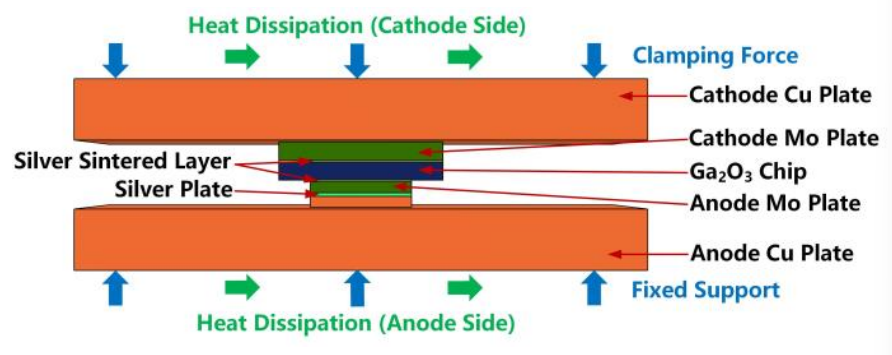
Fig. 1. Structure of press-pack Ga2O3 module.
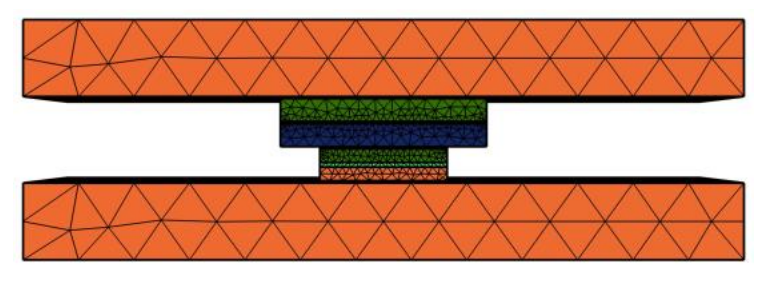
Fig. 2. Press-pack FE model after meshing.
DOI:
doi.org/10.1109/IEECSC64206.2025.11099800
